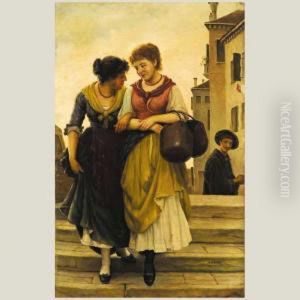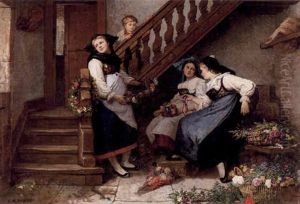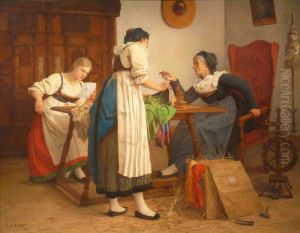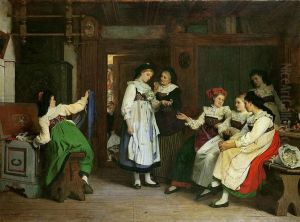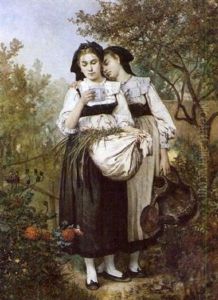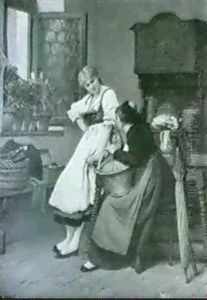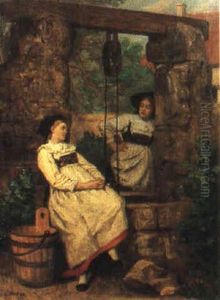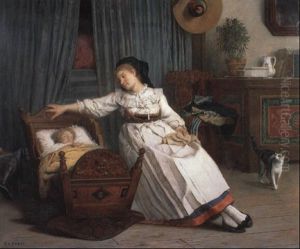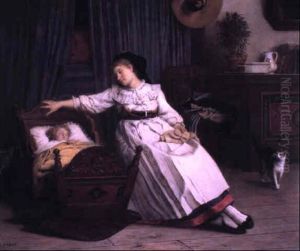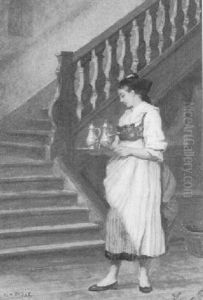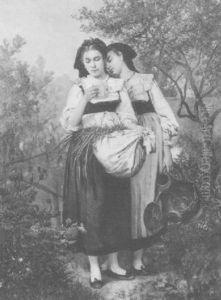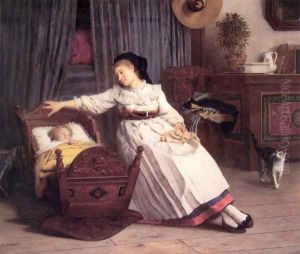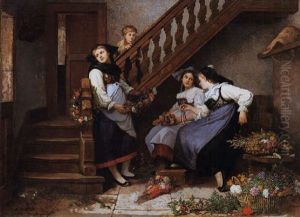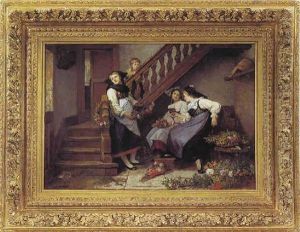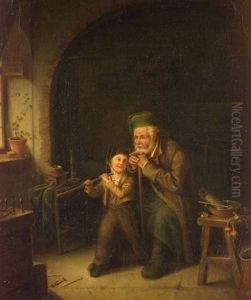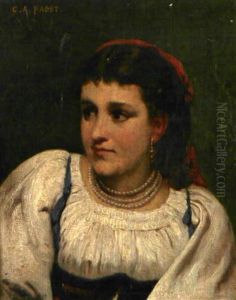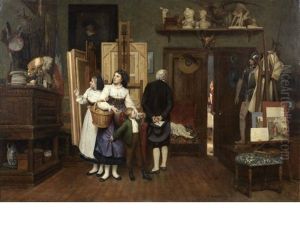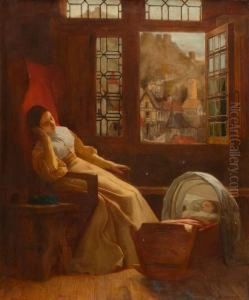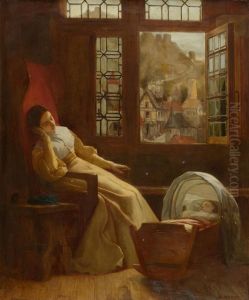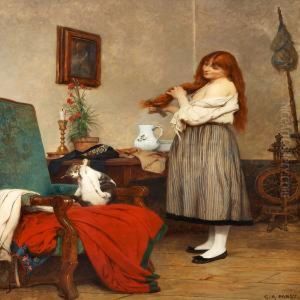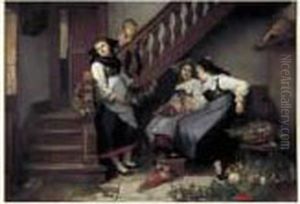Camille Aflred Pabst Paintings
Camille Alfred Pabst was a notable French painter born in 1828 in Metz, which at the time was part of France but later became part of Germany following the Franco-Prussian War. His artistic journey began at a young age, influenced by the rich cultural and artistic heritage of his homeland. Pabst demonstrated an early aptitude for the arts, prompting him to pursue formal education in the field. He studied at prestigious institutions where he honed his skills and developed a distinctive style that would later define his career.
Throughout his career, Pabst was known for his meticulous attention to detail and his ability to capture the essence of his subjects. His oeuvre primarily encompasses portraits and genre scenes, through which he explored the nuances of human expression and the subtleties of social interaction. Pabst's work is characterized by its realism and sensitivity, qualities that endeared him to both his contemporaries and posterity.
Pabst's contributions to the art world were recognized in his time, and he participated in several exhibitions, gaining accolades and the admiration of his peers. His paintings were sought after by collectors and art enthusiasts, contributing to his reputation as a respected figure in the French art scene of the 19th century.
Despite his success, Pabst remained dedicated to his craft, continually striving to capture the complexity of the human condition through his art. He was a prolific artist, leaving behind a substantial body of work that continues to be studied and appreciated for its artistic merit and historical significance.
Camille Alfred Pabst's legacy is that of a skilled painter who adeptly chronicled the lives and sentiments of his era. His death in 1898 marked the end of a fruitful career, but his artworks endure, offering insight into the culture and society of 19th-century France. Through his paintings, Pabst has achieved a form of immortality, his name and work continuing to be celebrated in the annals of art history.
